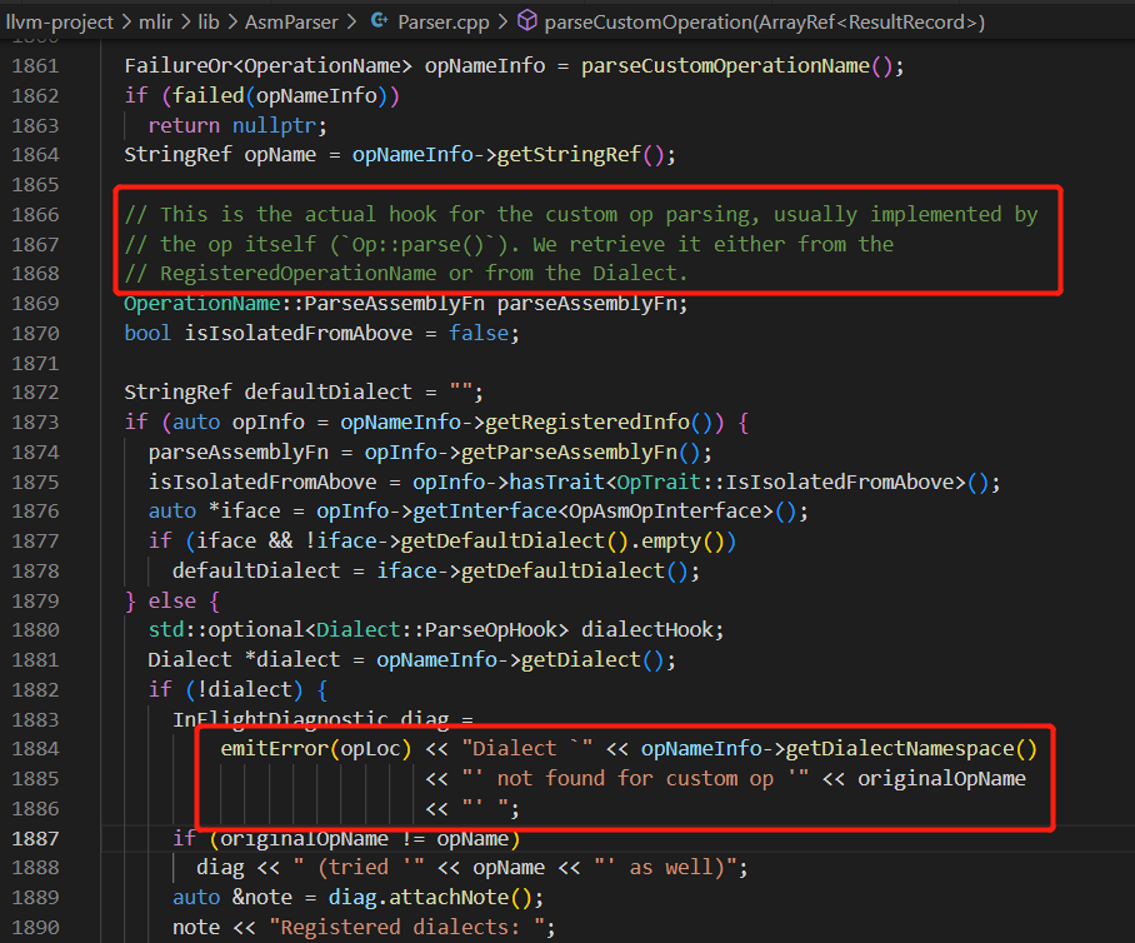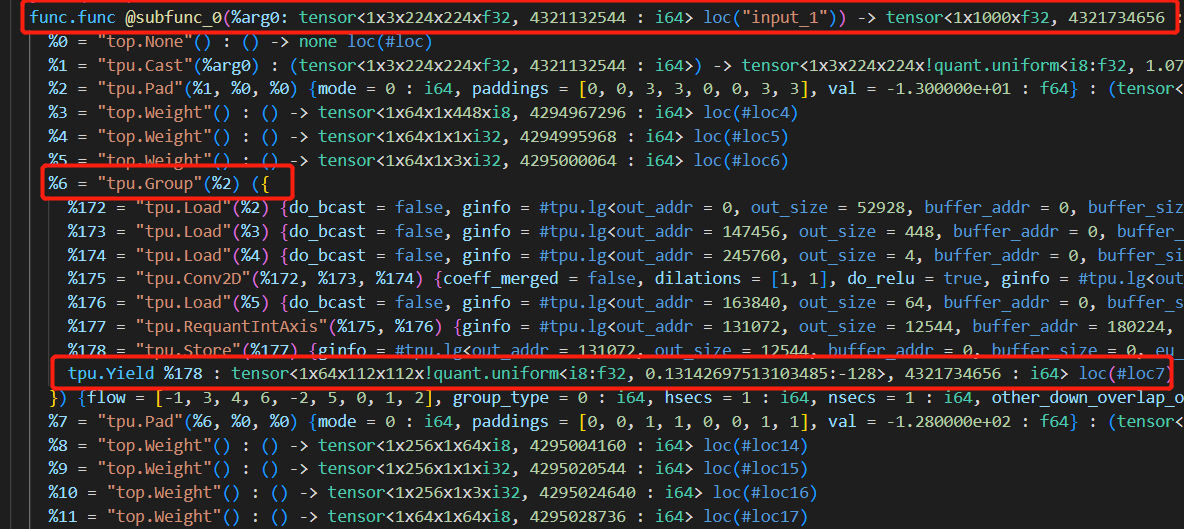1.在查看#issue 80 的时候,现在会报错误:
错误是在python中调用 self.module = mlir.ir.Module.parse(context, self.ctx)报出的,尝试查找错误来源,可能是在下面的地方报错:

想请教的2个问题:
1.dialect和operation除了在ODS中定义,是否需要做register,如果需要应该如何做?
2.mlir 文件中的多数算子是带有引号,也有不带引号的算子,例如:tpu.Yield算子,请问有引和没有引号的算子有什么区别,定义算子时,哪些地方会导致生成的mlir文件中算子有无引号差别?
